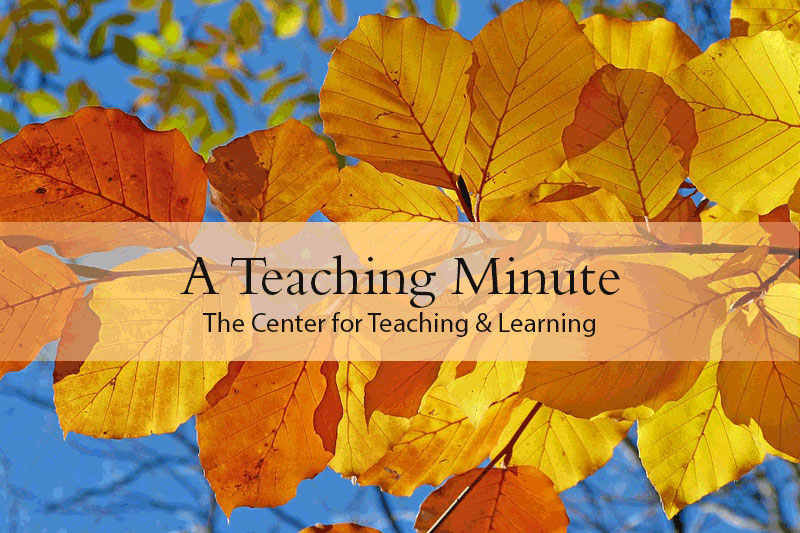“A Teaching Minute” is a new CTL resource that
delivers teaching tips to your inbox.
Friday, 9/27/2024
Continuing our focus on the Evolving Framework for Inclusive and Equitable Teaching, this week’s topic relates to principles 1. Foster a Sense of Belonging and 5. Learn Through Critical Reflection. And it’s a timely Minute topic as we approach the mid-point of the semester.
Gathering anonymous, mid-semester student feedback helps to “check the pulse” of our classes and learn what's working and not working for students. It also signals to them that you care about their experiences and want them to succeed.
Considerations for Collecting Feedback
- Share with students your goals for collecting their feedback, that it will be anonymous, and how you will use it.
- Include questions about what you most want to know, for example:
- What's going well for you in this class?
- What could be improved?
- How are classroom dynamics?
- What topics or concepts are you struggling with the most?
- Which topics or concepts have you found most engaging or interesting?
- Are the course expectations and objectives clear?
- Do you feel you can get support?
For you, reading the responses to open-ended questions will be easier for smaller classes, whereas closed-ended questions work better for large classes. If you want to share tips with students about giving constructive feedback, these guidelines [PDF] from the University of Texas at Austin are helpful.
- Collect feedback at a point in the semester when there's still time to adjust the course, such as mid-semester or after the first major assessment. But be realistic with students (and yourself!)—as much as you value their feedback, you may not be able to implement all the suggestions this semester. Let them know that their ideas will be helpful when you’re teaching the course again in the future.
- Share a high-level summary of the results with your students.
- Thank them for participating.
Methods
You'll have a better return rate if you dedicate classroom time for this. Some methods include:
- Note cards
- Brightspace Surveys are like the Quiz tool but with optional anonymity
- Microsoft Forms are available to all of us and have optional anonymity
- In-class feedback session facilitated by CTL staff
- Focus Group facilitated by CTL Student Facilitators
Reflect on the Feedback You Receive
Gathering direct student feedback is the first step, but making meaning from it requires honest self-reflection. In the Norton Guide to Equity Minded Teaching, authors Artze-Vega, Darby, and Dewsbury state that reflection is “...the intentional process whereby we examine and evaluate ourselves, our perspectives, our attitudes, our experiences, and the journey of our own learning” (page 203). We’ll have more in-depth discussion about reflection later this semester.
Additional Resources
Contact us if you have questions or would like support. If you collect mid-semester feedback from students, we’d love to hear about your successes and challenges!
Center for Teaching & Learning
www.uvm.edu/ctl
ctl@uvm.edu

